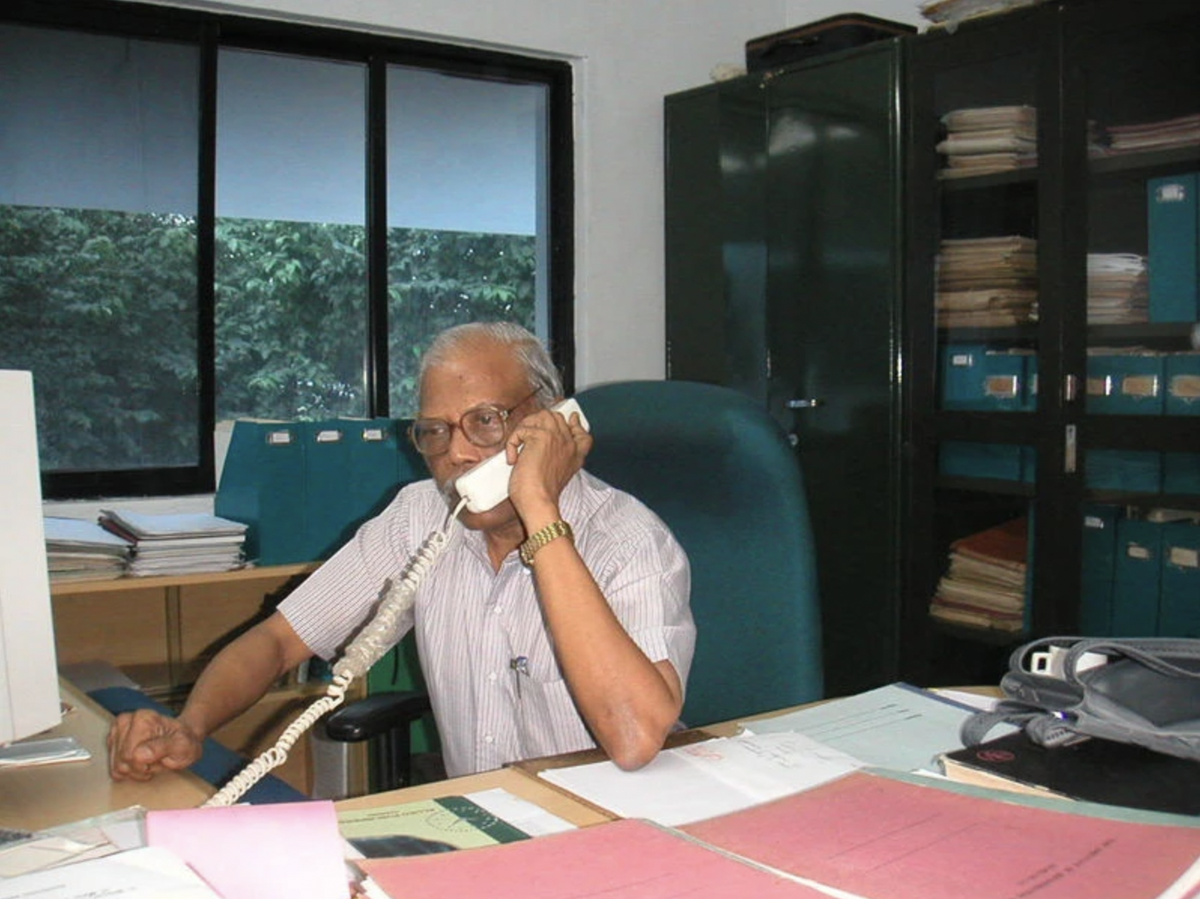Prof. G. Rajasekaran at the Institute of Mathematical Sciences, Chennai, in 2006.
| Photo Credit: M.V.N. Murthy/Special arrangement
Prof. Guruswamy Rajasekaran, a doyen of particle physicists of India, breathed his last on May 29, 2023. The community of scientists, especially particle physicists, in India have lost a most respected voice. He was many things – a researcher, mentor, teacher, and science populariser. His was a multifaceted life worth celebrating.
Star student
Rajaji, as he was affectionately called by his admirers, was the first of ten children born in 1936 in a small town, Kamuthi, near Madurai in Tamil Nadu. His parents had modest means; his father owned a shop selling brass vessels. Higher education was a problem and Rajaji got a loan scholarship from the Nadar Mahajana Sangam and also the merit-cum-means scholarship of the Madras state government to pursue intermediate studies at the American College in Madurai in 1952.
He completed his undergraduate studies in Madras Christian College (MCC) in 1954. While at MCC, he had the opportunity to meet many scientists from the Tata Institute of Fundamental Research (TIFR), which led him to apply for the Atomic Energy Establishment Training School, which later became the BARC training school. He topped the first batch of nearly 150 trainees by a wide margin in 1958. He received a gold medal, much later, from Prime Minister Manmohan Singh during the golden jubilee of the training school in 2007.
He chose to join TIFR to pursue his research in theoretical physics. He did his thesis work with Richard Dalitz at the University of Chicago, with a year at Oxford University, before returning to TIFR in 1964. He married Suthandra Devi in 1965. His daughters Poongodhai and Uma were born in 1966 and 1972 respectively.
Unified theory
Rajaji’s work is broadly in the area of particle and nuclear physics. He was probably one of the first ones to see the tremendous potential of the Weinberg-Salam model in physics, which described particles and their interactions, in the late 1960s. He gave a course of lectures on this electroweak unified theory at the Saha Institute of Nuclear Physics in 1971. This was the first of such courses in the country but probably also the world. Many young physicists benefited tremendously from these lectures.
One of Rajaji’s regrets was that even though he had a “seat on the front row”, he missed out on the “big stage” since he felt he could have made many more important contributions to this field. The electroweak unified theory describes how two fundamental forces of nature, the electromagnetic and the weak-nuclear (involved in radioactive decay) forces, unify at a high energy.
Rajaji moved to the University of Madras in 1976, primarily to be in a place with a large number of students as well as to be closer home to his roots. With the addition of Rajaji, the Department of Theoretical Physics at Madras University, already well established, became one of the best places to do theoretical physics in India.
IMSc and INO
In 1984, Rajaji was appointed as the joint director of the Institute of Mathematical Sciences after the founder-director Allladi Ramakrishnan retired. In the first five years, Rajaji went about building a strong physics group, hiring a young group of researchers from institutions all around the world. He faced the brunt of a turbulent period in the late 1980s, but things soon normalised and Rajaji continued his research work until his formal retirement in 2001; even after this, he continued as professor emeritus. In this time he was also involved in setting up and continuing the growth of the Chennai Mathematical Institute.

Rajaji at the Institute of Mathematical Sciences, Chennai
| Photo Credit:
M.V.N. Murthy/Special arrangement
An important aspect of Rajaji’s contributions is the proposal in 2000 to set up the India-based Neutrino Observatory (INO), a facility to detect and study subatomic particles called neutrinos. According to the proposal, the INO would house the world’s most massive magnetised iron detector. He also contributed to defining the physics goals of such a detector, mainly through the study of naturally occurring atmospheric neutrinos. Rajaji was also involved with selecting the site, and canvassed vigorously for this very ambitious project. Unfortunately, it has still not seen the light of day today.
True scholar
All through his life, Rajaji was an exemplary teacher who did not hesitate to teach at any level – from school students to advanced researchers and teachers. He communicated with the general public in Tamil and wrote extensively about science, in particular the INO, in both English and Tamil. He did his research, public outreach, and institute-building in a refreshingly lively, honest way. He was a generous and kind-hearted person who would never say no when help was needed.
Rajaji was active in research for more than six decades. He made significant contributions in a wide range of areas, including hypernuclear physics, flavour physics, current algebra, neutral-current weak interactions, the integer quark model, string theory, new forms of quantum statistics, neutrino physics, and dark matter, among others. He was always keen to enlarge his sphere of activity and influence over the development of particle physics in the country, and was in that sense a true scholar.
In the passing away of Rajaji, we have lost a colossus who touched the lives of a large number of people – students, collaborators, friends, and family. We will miss him, his boundless enthusiasm, and his infinite optimism.
D. Indumathu is a professor and M.V.N. Murthy is a retired professor, both at the Institute of Mathematical Sciences, Chennai.